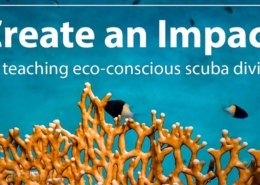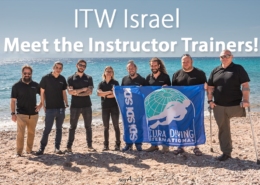SDI Instructors: Good Leaders in Tight Spots
By Geoff Sutton
Consider this scenario: You’re an SDI instructor taking your class of open water divers out for their first check-out dive. The weather is beautiful, viz is great, and current is minimal. Perfect conditions for their first dive. Then something happens:
- Perhaps that one student who is a little anxious about water touching their nose bolts for the surface.
- Maybe a student’s low-pressure inflator gets stuck and they start an uncontrolled ascent.
- Perhaps one of their regulators begins to free-flow and they panic.
It could be anything, really.
Some instructors have this type of situation occur early in their careers; some will never have a situation like this; most of us, though, will have it happen at some point throughout our teaching career. No matter when it happens, it’s up to you, the instructor, to ensure student safety. This is the crucial moment when you earn those big bucks you make teaching scuba by displaying leadership in a dangerous situation.
This is what leadership theorists call in extremis leadership.
In 2019, I surveyed SDI instructors to see how they measured up as in extremis leaders as part of my doctoral research. So how did I get there? Back in 2007, Dr. Tom Kolditz, who was the head of the psychology department at West Point, was interested in what sort of leadership effective combat leaders use. His conclusion was that the most effective combat leaders were authentic and that authentic leadership was also effective in dangerous sports such as sport parachuting and mountain climbing. Separately, Dr. Bruce Avolio, in collaboration with other researchers, developed the theory of authentic leadership at about the same time Kolditz was investigating combat leadership.
According to Avolio, authentic leaders display 4 basic qualities:
- They know themselves, their strengths, and their weaknesses;
- They have a moral foundation, allowing them to evaluate questions of right and wrong, and to make ethically sound choices;
- They are transparent in their dealings with others, and don’t have any hidden agendas;
- They make decisions based on fairness, treating people without favoritism.
I am a West Point graduate as well as an SDI instructor, and I have been interested in combat leadership for many years. I found Kolditz’s leadership model fascinating and wondered whether it applied to scuba instructors. Significantly, in extremis leaders specifically train to enter dangerous circumstances and then voluntarily enter them, taking their followers with them. They make decisions that affect the well-being and survival of everyone present. This sounded a lot like scuba instructors teaching a class to me, but I wondered whether scuba diving was dangerous enough. I looked at both mountain climbing and sport parachuting and discovered that scuba diving is about as hazardous as both of these sports. It seemed clear to me that scuba instructors were in extremis leaders as Kolditz described them.
So, I approached SDI and asked whether I could survey their instructors.
Of course they were happy to help me, and in 2019 I sent out a survey to SDI instructors worldwide to measure their authenticity levels. What did my results show? Well, the average SDI instructor is a lot more authentic than the general leader population. There is a lot more research to be done in this area, but the initial indications are that SDI instructors are pretty good leaders, especially in the dangerous circumstances of scuba diving.
Many of you answered my survey, and I am grateful that you did. Thank you. If you’d like to read more about this subject, my research, or my results, you can find my dissertation here: https://digitalcommons.georgefox.edu/dmgt/3/










댓글 남기기
토론에 참여하시겠어요?언제든지 참여하세요!